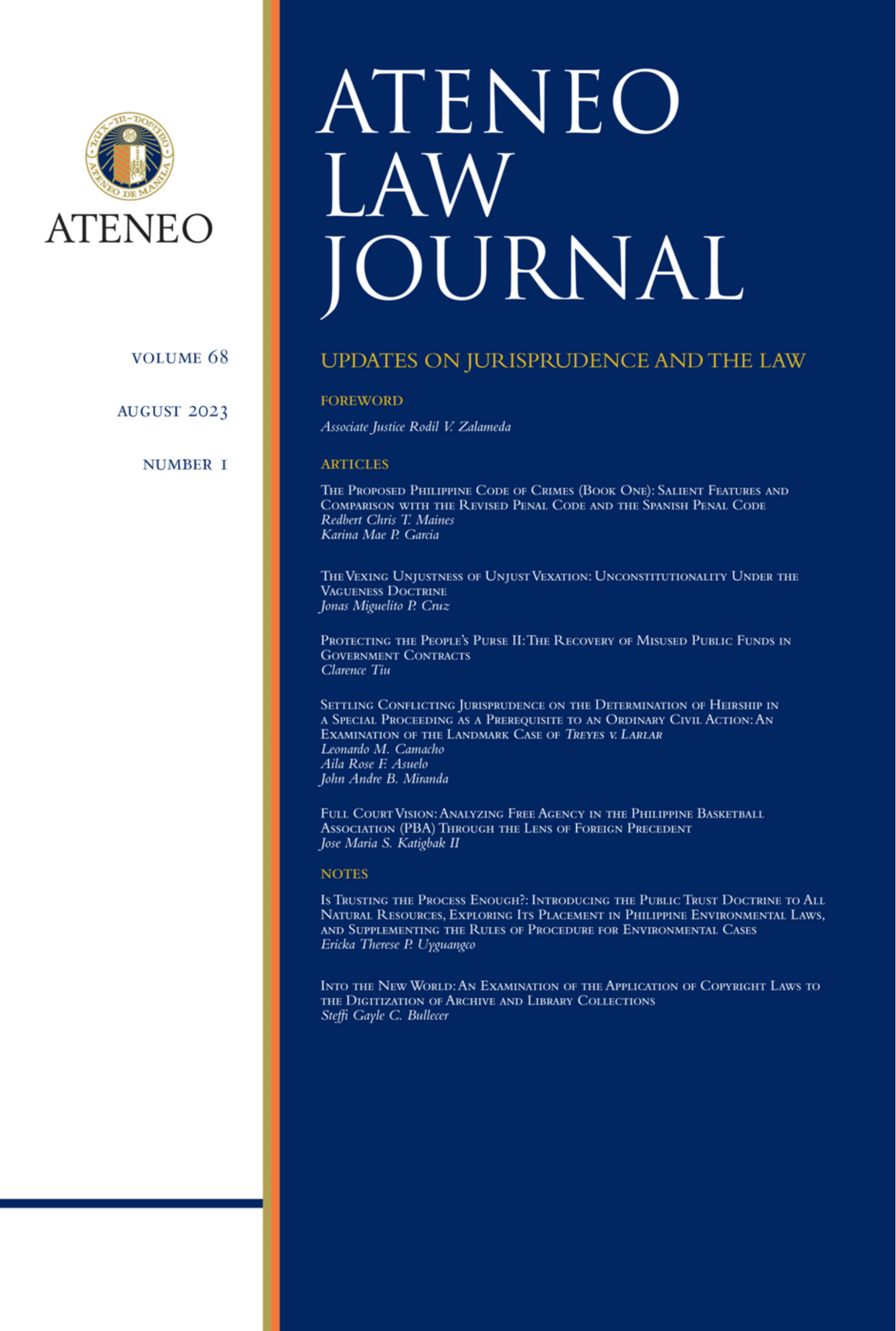AVAILABLE ONLINE: Volume 67, Issue 2
Apr 26, 2024
As a man-made creation designed to facilitate human activity, the built environment should serve as a catalyst for realizing the full potential of society. However, in reality, society is plagued by several issues attributed to the built environment, such as traffic congestion, environmental degradation, and climate change.
In their Article "The Beauty and Madness of Metropolitan Manila: Laws Shaping Its Built Environment,” Atty. Marlon M. Cariño and Arch. Armando N. Allí provide an in-depth analysis of how the National Building Code of the Philippines and its Implementing Rules and Regulations govern local government units' decisions on their land use plans and other matters that shape their cities.
Atty. Antonio G.M. La Viña and Atty. Jameela Joy M. Reyes offer a perceptive analysis on Philippine government infrastructure projects within the Paris Agreement and the Intergovernmental Panel on Climate Change. In their Article, “Maladaptation, Loss and Damage, and the Built Environment: Limits and Possibilities,” they discuss the built environment’s dual role in either enhancing adaptiveness to climate change or accelerating environment degradation.
In her Article entitled "Driving Change: How the Law Can Pave the Road for Accessible Public Transport for People with Mobility Issues in the Philippines," Atty. Melanie Marion San Luis elaborates on the ongoing challenges faced by persons with disabilities, the elderly, and those with similar mobility issues when using public transportation. The Article subsequently proposes adjustments to existing Philippine transportation laws and regulations, and policies to better address these issues.
The Issue seeks to break new ground by exploring how legal mechanisms may contribute to ensure a sustainable, inclusive, human-centered built environment.
Click the link below to access the Journal’s Built Environment and the Law Issue: https://bit.ly/ALJIssue67-2.


